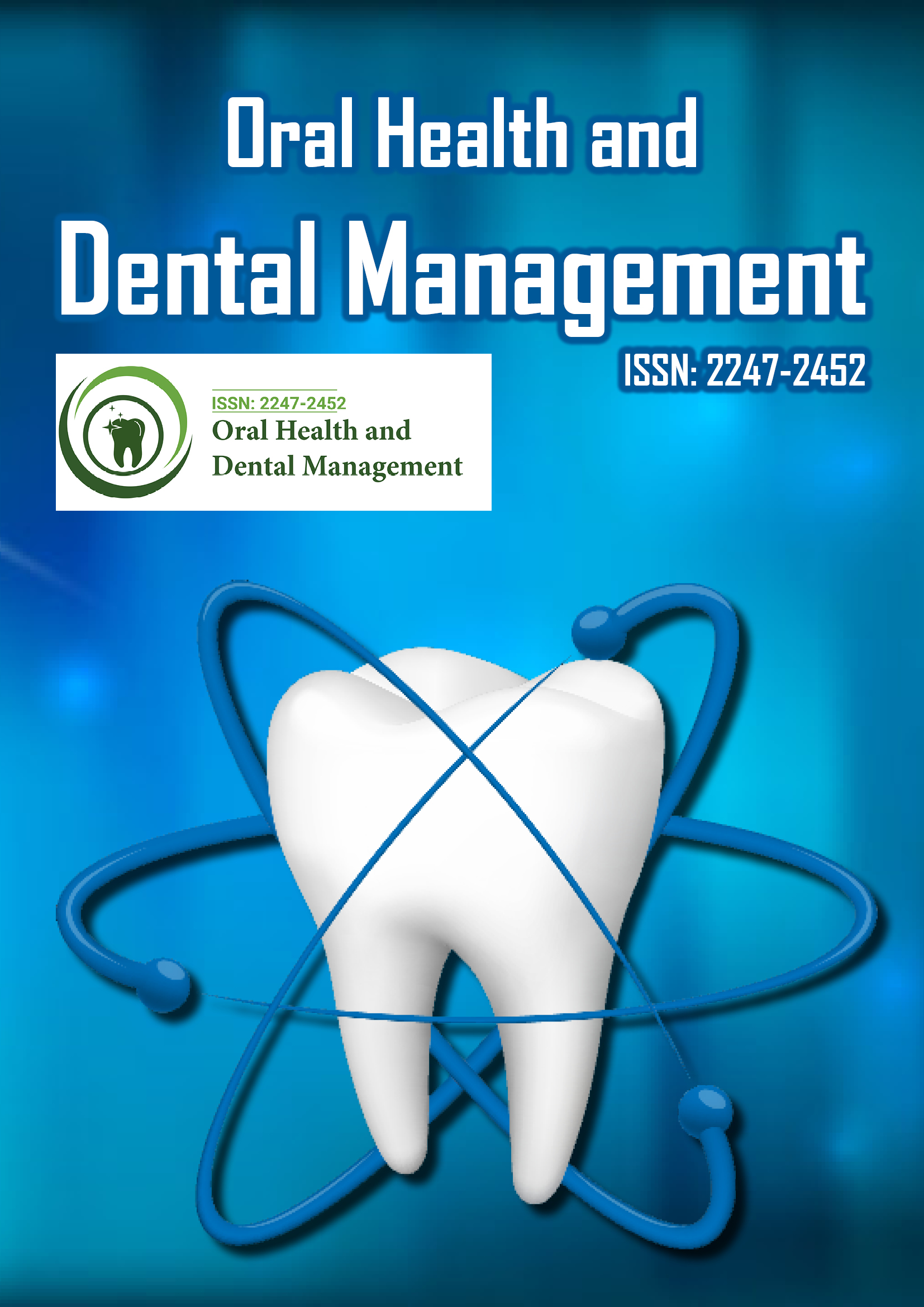Indexed In
- The Global Impact Factor (GIF)
- CiteFactor
- Electronic Journals Library
- RefSeek
- Hamdard University
- EBSCO A-Z
- Virtual Library of Biology (vifabio)
- International committee of medical journals editors (ICMJE)
- Google Scholar
Useful Links
Share This Page
Journal Flyer

Open Access Journals
- Agri and Aquaculture
- Biochemistry
- Bioinformatics & Systems Biology
- Business & Management
- Chemistry
- Clinical Sciences
- Engineering
- Food & Nutrition
- General Science
- Genetics & Molecular Biology
- Immunology & Microbiology
- Medical Sciences
- Neuroscience & Psychology
- Nursing & Health Care
- Pharmaceutical Sciences
Opinion Article - (2024) Volume 23, Issue 2
Treatment Approaches for Oral Submucous Fibrosis: Pharmacological and Surgical Interventions
Will Wheeler*Received: 27-May-2024, Manuscript No. OHDM-24-26080; Editor assigned: 31-May-2024, Pre QC No. OHDM-24-26080 (PQ); Reviewed: 14-Jun-2024, QC No. OHDM-24-26080; Revised: 21-Jun-2024, Manuscript No. OHDM-24-26080 (R); Published: 28-Jun-2024, DOI: 10.35248/2247-2452. 24.23.1108
Description
Oral Submucous Fibrosis (OSF) poses a significant problem in clinical practice due to its chronic and progressive condition. This disorder, which is most common in South Asian populations where eating areca nuts is common, causes the oral mucosal tissues to fibrosis, which can limit mouth opening or even result in malignant transformation. Treatment approaches for oral submucous fibrosis include both medication and surgery, to reduce symptoms, stop the disease’s progression, and restore oral function. The basis of early treatment in OSF is pharmacological therapy. To reduce inflammation and fibrosis, doctors often prescribe corticosteroids, both systemic and topical. Direct topical application of steroids to the impacted mucosal areas increases mouth opening and relieves symptoms like burning. To relax the fibrous bands and restore oral mobility, intralesional injections of steroids are also utilized to choose particular fibrotic lesions within the oral cavity.
Other pharmaceutical medicines like hyaluronidase may be used in addition to steroids. Hyaluronic acid is a part of the extracellular matrix that plays a role in the development of fibrotic tissue, and hyaluronidase works by hydrolyzing it. This enzyme facilitates the entry of other treatments into fibrotic regions, hence reducing pain in the tissue and increasing their effectiveness. However, because hyaluronidase may have adverse effects, its usage in oral submucous fibrosis control needs to be carefully considered and closely monitored. The possible function of antioxidants like beta-carotene and lycopene in the therapy of oral submucous fibrosis is also being studied. These substances appear to have anti-inflammatory abilities and are thought to prevent oxidative stress, which simplifies the development of fibrosis. Antioxidant therapy for oral submucous fibrosis is still being studied, but when used as an adjuvant to traditional treatments, it may be able to reduce the severity of the illness and enhance patient outcomes.
Surgical methods become required in situations where pharmaceutical therapies alone are not sufficient. The objective of surgical management is to remove poorly damaged tissue or release fibrous bands that limit mouth opening. To protect the safety and comfort of the patient, general anaesthesia is usually used throughout these procedures. During a fibrotomy, exact incisions are made to release fibrous bands, which improve functional outcomes and restores normal mouth mobility. Exercises and physiotherapy are part of post-operative care to help with tissue healing and recurrence prevention. Conversely, a fibrectomy entails the complete removal of fibrotic tissue and may be necessary in extreme situations if there is significant impairment of function.
Pharmacological treatments are frequently used in conjunction with surgical operations to manage residual symptoms and avoid the recurrence of restricted mouth opening. Following surgery, routine check-ups are essential for monitoring the healing process while looking for any indications of malignant change or illness recurrence. Modern surgical methods, like laser-assisted operations, have been studied recently for possible advantages in oral submucous fibrosis treatment. With less harm to the surrounding healthy tissues and more accurate removal of tissues available with laser surgery, patients experience less discomfort after surgery and recover more quickly. Long-term study results and additional clinical validation are necessary before they may be widely used in the treatment of oral submucous fibrosis.
Newer therapeutic techniques are being researched in addition to conventional pharmaceutical and surgical therapies. Among these are focused molecular treatments, which are intended to interfere with particular pathways that lead to the development of fibrosis. For example, preclinical studies indicate that medications that target Transforming Growth Factor-beta (TGF-β) signaling, a major regulator of fibrosis, may be able to stop or reverse fibrotic alterations in OSF. Moreover, oral submucous fibrosis management protocols include psychological support and quality-of-life assessments using comprehensive treatment techniques. To address the physical and emotional elements of a chronic condition like oral submucous fibrosis, a multidisciplinary approach is required. These disorders can have an impact on patients’ everyday activities and interactions with others.
Conclusion
In conclusion, developments in pharmacology, surgery, and new therapeutic approaches are changing the appearance of treatment for oral submucous fibrosis. Antioxidants and corticosteroids are two examples of pharmacological therapies that try to reduce inflammation and fibrosis. Techniques such as fibrotomy and fibrectomy offer immediate comfort from constricted mouth opening and stiffness of the tissue. Continuous studies into focused treatments and lifestyle adjustments highlight the need for a comprehensive approach for controlling oral submucous fibrosis, guaranteeing optimal outcomes, and improving patient’s quality of life.
